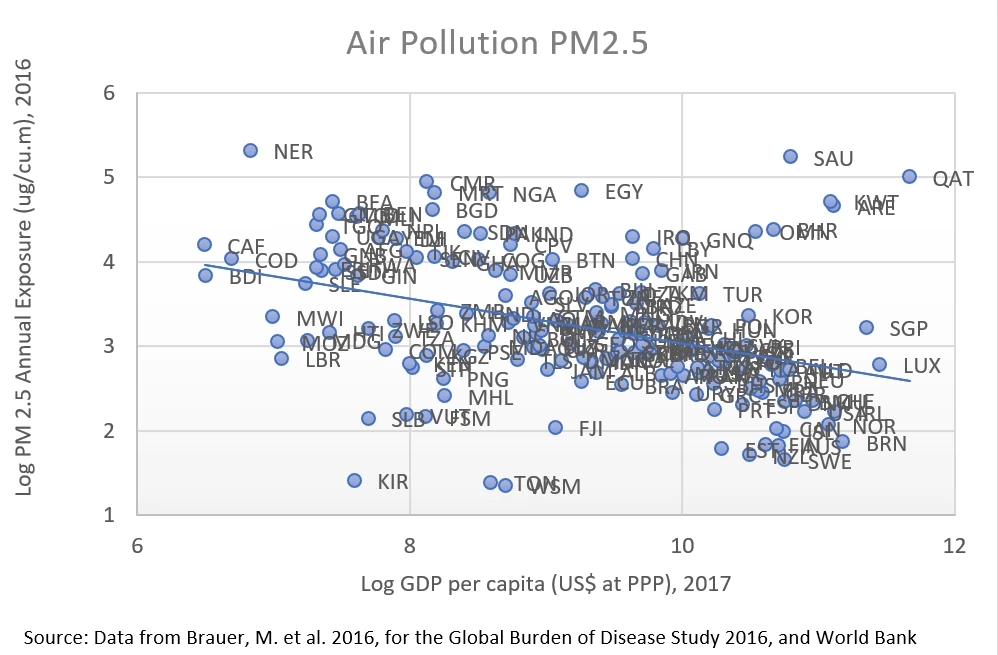
While air pollution originates from a variety of sources, tailpipe emissions from cars, trucks, and buses rank among the largest contributors. In a world where motor vehicles reign supreme and 96% of transport's energy use comes from fossil fuels, we are effectively meeting our mobility needs at the expense of our life expectancy.
Low and middle-income countries pay the highest price: as highlighted in this graph by the Sustainable Mobility for All initiative (SuM4All), countries with a relatively low GDP per capita tend to see higher concentrations of PM2.5, a type of particulate matter generated primarily by road traffic.

Driving Restrictions: In a bid to reduce congestion and air pollution, some cities have chosen to restrain commuters from using their cars during rush hour on a specific day of the week, which typically varies for each driver based on the last digits of their license plate number. The type of demand management measure has been implemented in Sao Paulo, Mexico City, Santiago, and many other urban centers across Latin America. In Quito, research has shown that driving restrictions have achieved a reduction of 9-11% in Carbon Oxide (CO) emissions during peak traffic hours. The efficacy of this policy, however, depends on whether drivers can bypass the restrictions by switching to other private travel modes. In Delhi, around half of the affected drivers were able to use private transport alternatives like other household vehicles, taxis or rickshaws. To avoid this and to maximize the benefits of driving restrictions policies, providing quality public transport options is essential.
Import Regulations on Second-Hand Vehicles: The vast majority of cars, trucks, and buses imported to low income countries are second-hand vehicles. They are typically many years or even decades old and have no catalytic converters to reduce toxic gas emissions, thus contributing significantly to air pollution. There are several ways for developing countries to address this situation: Kenya has regulated the second-hand vehicle market by banning second-hand car imports older than eight years of age; Tanzania charges additional excise duty on used vehicles eight years of age or older; and the whole East Africa region applies depreciation rates to these imports.
Electrification: There is an urgent need to stave off dependency on fossil fuels and leverage the abundant renewable energy resources found in many developing countries. As shown by India and China, the latest advances in Electric Vehicle (EV) and battery storage technology offer promising new solutions. As noted in the GRA, however, while EVs can be quite effective at combatting local air pollution, they are not silver bullet to tackle other problems such as traffic congestion. In addition, in order to maximize environmental benefits, it is important to make sure the electricity used to power EVs comes from sustainable sources.
Low Emission Zones (LEZs): Access to LEZs is restricted to vehicles that meet specified emission standards. Any vehicle that fails the standards may be either excluded from entering the zone or will be charged a fee to get in. This scheme has been adopted in many European cities and in three different areas of Hong Kong. In Hong Kong, franchised bus operators can only operate vehicles that meet Euro IV standards or above; however, these restrictions do not apply to other types of vehicles like private cars.
Have ideas for more innovative, more ambitious policy measures that could help developing countries accelerate the transition toward green mobility? Share your thoughts in the comments section below, or click here to find out how you can provide input on the Global Roadmap of Action Toward Sustainable Mobility!



Join the Conversation